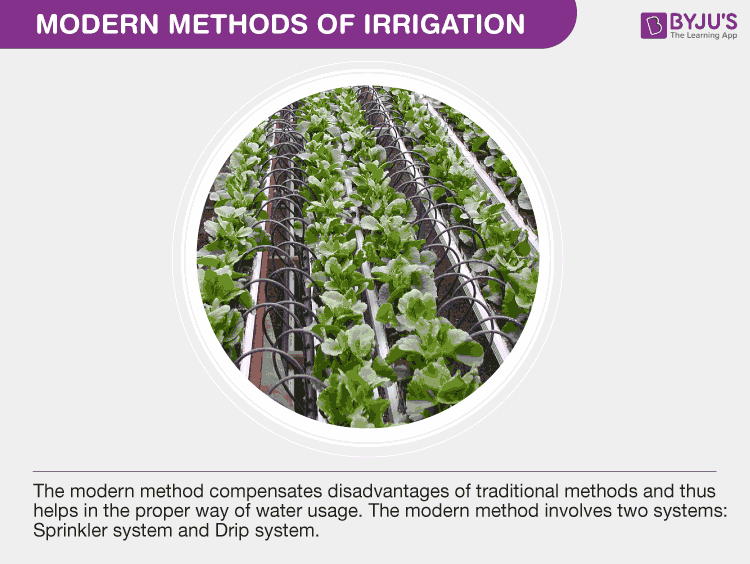Table of Contents
Introduction
Crops require water at regular intervals of time for proper growth and development. This supply of water to the crops at regular intervals is known as irrigation. There are two methods of irrigation, namely, traditional and modern. The modern methods of irrigation include:
- Sprinkler System
- Drip System

Sprinkler Irrigation
It is an easy and simple method of irrigation nowadays. Water is provided to the fields by spraying water droplets, similar to rain, through pipes. Any loss of water is avoided in the sprinkler system. The problem of waterlogging is not present in this system. The balance of groundwater is also maintained.
Sprinkler irrigation is done in areas with less water and uneven ground level. The main pipeline is laid in the field. They are joined to perpendicular pipelines with rotating nozzles. Water from the tube wells is allowed to pass through these pipelines under pressure, which escapes from the rotating nozzles and gets sprinkled on the crops.
Sprinkler irrigation is required in areas where a change in temperature of the earth, environment, and humidity is seen. The continuous sprinkling of water improves the physical conditions and composition of the soil.
Advantages of Sprinkler Irrigation
- It helps in the conservation of soil.
- It increases soil productivity.
- It protects the crops from extreme frost or temperature.
- Fertilizer and insecticide application can be done by the sprinkler system.
- Physical condition and composition of soil are maintained.
- It is very useful for sandy soil and uneven land.
Drip Irrigation
This method of irrigation is gaining popularity in areas with a scarcity of water. Narrow pipes with small holes are laid on the fields. When water flows through the pipes, it drips at the place of the roots of the plants. The roots absorb the water and supply it to the plants. Furthermore, no water is wasted in this method.
Advantages
- Water reaches directly to the roots of the plants.
- It saves a lot of water, which can be utilized for irrigating more areas.
- Weeds do not grow because the water reaches directly to the plants and does not spread anywhere on the field.
- Crop yield is increased in this method.
- The area near the plants is dry so bacterial growth is limited.
- It reduces the use of water in agriculture.
To explore more Modern Methods of Irrigation, please download BYJU’s Learning App.
Related Links
| Crop protection and Weeding |
| Agricultural Practices |

It’s too good 👍 thank you for helping me .